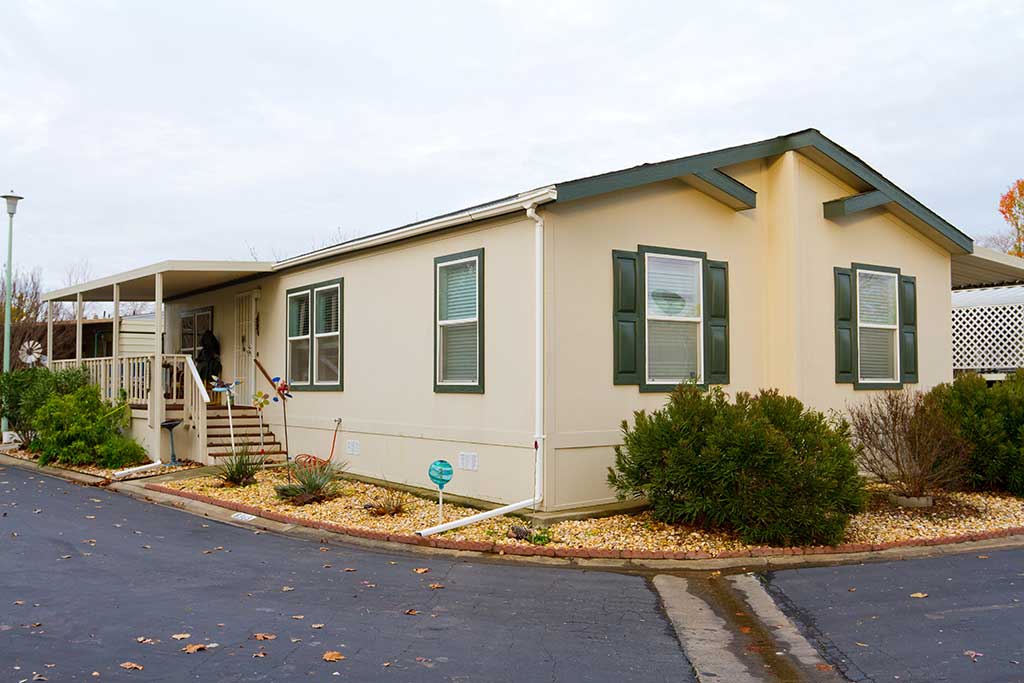Modular Vs. Manufactured Home: What Is The Difference?
Michelle DeLong
february 27, 2024

The world of housing is broad and diverse. Amidst the traditional options such as brick-and-mortar homes, apartments and condos, two unique categories stand out – modular vs manufactured homes.
Our homes are not just houses; they’re healthy and happy living spaces. High quality yet affordable, that’s the Ignite Communities promise. Above all, we remove the confusion between modular vsmanufactured homes. We simplify it, making the choice easy for you. Getting Started is Easy with Ignite Communities, your choice for a new way of living. We are a nationally acclaimed manufactured housing developer. Our exceptional communities are well-placed and well-designed. We provide variety – whether you want to own or lease your home.
Understanding Construction and Design Differences
Modular homes, often known as prefab homes, are built in sections at a factory. Workers construct them indoors, protecting them from adverse weather conditions. They ship the sections to the chosen site, where they are joined together and placed on a permanent foundation.
Manufactured homes, on the other hand, are also factory-built and assembled entirely off-site. They are transported to the site as a single-piece, double or triple-wide structure, based on the design. Unlike modular homes, they are placed on a non-permanent foundation, usually a pier-and-beam setup.
Analyzing the Quality and Durability Contrast
Customers often question the durability of these homes. In the comparison of a modular vs manufactured home, modular structures tend to shy away from the temporary perception. Built to withstand transportation, their structural integrity is designed to meet or exceed traditional site-built homes.
Manufactured homes, however, suffer a somewhat inferior perception. Although strides in technology have vastly enhanced their quality and durability, some customers perceive them as needing to be more sturdy. The reality? Modern manufactured homes mix affordability with robust construction, striding confidently in the durability spectrum.
Dissecting Building Regulations and Standards
Though both housing types maintain rigorous factory quality controls, regulation differences persist. Modular homes abide by the same local building codes as site-built homes in their location, ensuring congruence in standards.
Manufactured homes answer to the federal Department of Housing and Urban Development (HUD) code rather than local codes. The HUD code, imposed in 1976, guarantees minimum safety standards, emphasizing performance rather than specific materials.
Impact on Resale Value and Appreciation
Another critical consideration is the impact on resale value and appreciation. Modular homes tend to appreciate, akin to traditional homes. Their appreciation rides on factors like market conditions, home maintenance, and community areas.
Manufactured homes follow a different story. They depreciate over time, much like vehicles, owing to their mobile nature. Yet, the right location, upgrades, and care can offset this trend. Also, well-maintained manufactured home communities can support value retention and even appreciation.
Cost Differences between Modular and Manufactured Homes
Modular and manufactured homes present themselves as smart alternatives to traditional site-built houses. The cost of modular homes and manufactured ones varies broadly. The price tag of a modular home depends on its size, type of material used, and location, among other concerns. They are pretty like conventional homes, built in sections at factories—moved to their final area to be pieced together.
Contrarily, manufactured homes are entirely built at a factory and then transported to their final spot. It is usually cheaper than modular homes. Their cost generally hinges on the model, size, and additional amenities like porches, decks, etc.
These homes give residents the liberty to enjoy housing that is budget-friendly yet good quality. For those on a tight budget, manufactured homes may be a better option. For folks seeking a house that reflects the appeal and feel of a traditional home, modular homes might be a perfect choice, albeit at a slightly higher cost.
Financing Options for Modular and Manufactured Homes
When it comes to financing modular and manufactured homes, there are several paths to consider. Some may prefer traditional mortgage financing. Others might explore manufactured home loans insured by the Federal Housing Administration (FHA).
For modular homes, funding options are similar to those for site-built homes. This is because they are considered real property just like a site-built house. There might be more lending options, including conventional mortgage funding.
However, manufactured homes could be a bit different. Here, the type of loan depends on whether you own the land where the house will be placed. If you do, you have options like FHA-insured loans. If you don’t, you might need to explore personal property loans, often known as chattel loans.
Mobility & Permanent Foundations Comparison
Modular and manufactured homes differ broadly when focusing on mobility and permanent foundations. Modular homes, similar to traditional homes, get built on a permanent foundation. It is impractical to move these homes after they have been installed.
On the other hand, manufactured homes initially were designed for mobility. Over the years, manufactured homes have evolved and the majority of these homes now reside on a permanent foundation.
Energy Efficiency & Environmental Impact
Modular and manufactured homes are also subject to different energy efficiency and environmental considerations. Modular homes obey the same state and local building codes as site-built homes. These standards make sure they are energy efficient.
Manufactured homes follow the federal HUD code. Even with the HUD code’s emphasis on energy efficiency, the performance can’t beat modular homes. But, continuous revisions of the HUD code standards mean that newer manufactured homes can be considerably energy efficient.
Still, both modular and manufactured homes display a lower environmental impact than traditional homes. They produce less waste as their factory-built process makes use of precision machinery and reuses leftover materials. Both forms of housing represent a greener choice for conscious consumers.
Find Your Home with Ignite Communities
At Ignite Communities, we extend an invitation – find your home with us today. As a leader in providing robust and desirable communities, we are here for our residents. Affordable homes in premium locations are not distant dreams anymore. We’re here, ready to brighten your housing future.